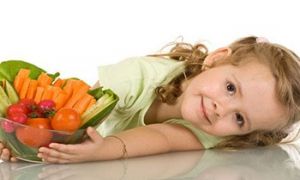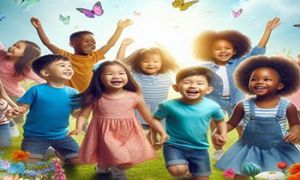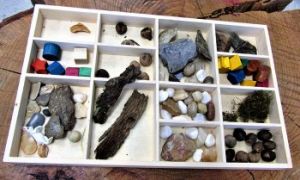

Despite the overwhelming volume of documentation educators are expected to complete, the National Law and National Regulations do not require endless observations, daily learning stories, or long‑form essays about children’s learning.
ACECQA’s own guidance for approved providers emphasises that documentation should be meaningful, authentic, and free from duplication, and that educators should use professional judgment when deciding what to record.
The National Regulations themselves focus on program visibility, child information, and records for safety and compliance, not excessive narrative documentation.
As of 2024–2025, new national regulations across Australia have significantly tightened restrictions on smoking and vaping in and around early childhood education and care (ECEC) settings. These changes reflect a growing commitment to child safety, educator well-being, and public health, and they’re now embedded in the Education and Care Services National Regulations and the National Quality Standard (NQS).
In early childhood education and care, child safety is not just a number—it’s a practice. While educator-to-child ratios are essential, they are only one part of a broader obligation: ensuring adequate supervision at all times. Together, these two pillars—Regulation 122 and Section 165—form the foundation of safe, responsive, and compliant care.
Today, 1 September 2025, marks a pivotal shift in Australia’s early childhood education landscape, with strengthened child safety regulations now officially in force under the National Quality Framework (NQF). These reforms—fast-tracked following the national review of child safety arrangements—aim to close regulatory gaps, improve incident response, and safeguard children in increasingly digital environments.
The State Administrative Tribunal fined a Bunbury childcare centre, in WA $15,000 after a four-year-old boy wandered off its property alone, a caution has been given to childcare service providers.
The NSW Minister for Education and Early Learning has released a Minister’s Statement of Expectations. This formal public statement covers how the education and care sector’s regulator will operate and what the public can expect of the government in ensuring that education and care services in NSW are appropriately regulated.
Children need safe and positive environments to learn and grow. To ensure this, services and educators need to ensure effective supervision at all times. The following article provides information on the different aspects of supervision, ranging from regulatory requirements and principles to practice strategies.
It is crucial that all providers and service staff ensure children are safe, healthy and protected from harm and risks associated with sleep and rest by complying with all sleep and rest regulatory requirements.
 Here is the list of the EYLF Learning Outcomes that you can use as a guide or reference for your documentation and planning. The EYLF… Read More
Here is the list of the EYLF Learning Outcomes that you can use as a guide or reference for your documentation and planning. The EYLF… Read More
 The EYLF is a guide which consists of Principles, Practices and 5 main Learning Outcomes along with each of their sub outcomes, based on identity,… Read More
The EYLF is a guide which consists of Principles, Practices and 5 main Learning Outcomes along with each of their sub outcomes, based on identity,… Read More
 This is a guide on How to Write a Learning Story. It provides information on What Is A Learning Story, Writing A Learning Story, Sample… Read More
This is a guide on How to Write a Learning Story. It provides information on What Is A Learning Story, Writing A Learning Story, Sample… Read More
 One of the most important types of documentation methods that educators needs to be familiar with are “observations”. Observations are crucial for all early childhood… Read More
One of the most important types of documentation methods that educators needs to be familiar with are “observations”. Observations are crucial for all early childhood… Read More
 To support children achieve learning outcomes from the EYLF Framework, the following list gives educators examples of how to promote children's learning in each individual… Read More
To support children achieve learning outcomes from the EYLF Framework, the following list gives educators examples of how to promote children's learning in each individual… Read More
 Reflective practice is learning from everyday situations and issues and concerns that arise which form part of our daily routine while working in an early… Read More
Reflective practice is learning from everyday situations and issues and concerns that arise which form part of our daily routine while working in an early… Read More
 Within Australia, Programming and Planning is reflected and supported by the Early Years Learning Framework. Educators within early childhood settings, use the EYLF to guide… Read More
Within Australia, Programming and Planning is reflected and supported by the Early Years Learning Framework. Educators within early childhood settings, use the EYLF to guide… Read More
 When observing children, it's important that we use a range of different observation methods from running records, learning stories to photographs and work samples. Using… Read More
When observing children, it's important that we use a range of different observation methods from running records, learning stories to photographs and work samples. Using… Read More
 This is a guide for educators on what to observe under each sub learning outcome from the EYLF Framework, when a child is engaged in… Read More
This is a guide for educators on what to observe under each sub learning outcome from the EYLF Framework, when a child is engaged in… Read More
 The Early Years Learning Framework describes the curriculum as “all the interactions, experiences, activities, routines and events, planned and unplanned, that occur in an environment… Read More
The Early Years Learning Framework describes the curriculum as “all the interactions, experiences, activities, routines and events, planned and unplanned, that occur in an environment… Read More

The following is a cheat sheet for Quality Area 2. Quality Area 2 of the...
See more...
Gardening offers a wealth of educational benefits for children, fostering development across multiple domains. It...
See more...
Loose parts is a term used in early childhood learning to include such objects and...
See more...© 2009-2025 Aussie Childcare Network Pty Ltd. All Rights Reserved.

